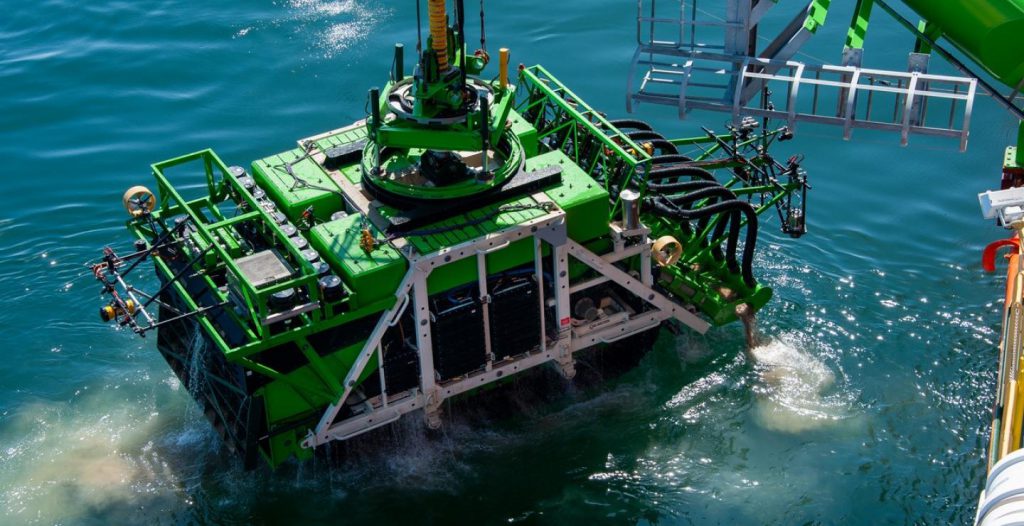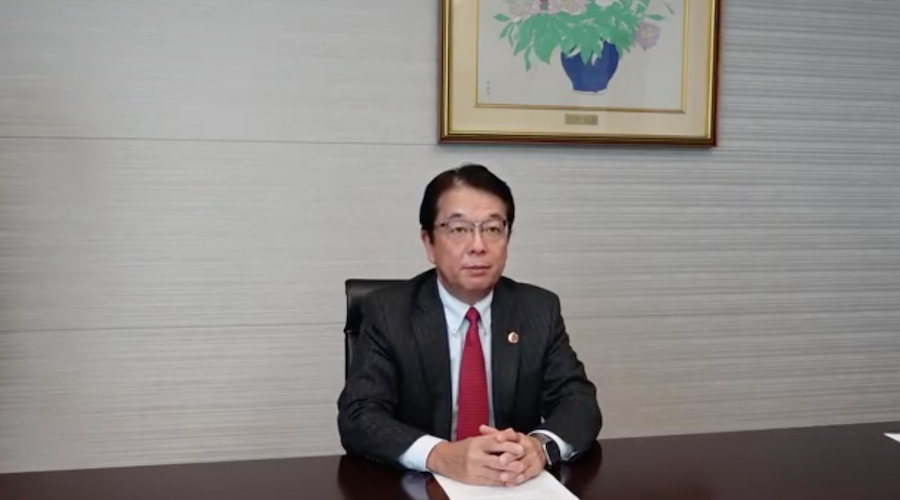Deep-sea mining robot lost on cobalt-rich floor of Pacific

A deep-sea mining robot on test mission to bring up rocks rich in cobalt and nickel from the floor of the Pacific Ocean has malfunctioned.
Controversial plans to mine the ocean floor face a key test this year when a United Nations body unveils rules that could spur the exploitation of hundreds of billions of dollars of battery metals. Environmentalists say that would endanger fragile marine ecosystems, while the industry argues that extracting metals needed for the green-energy transition would cause less damage than terrestrial mining.
Related: World’s Top Ten nickel projects, Clarion-Clipperton Zone is no. 1
Global Sea Mineral Resources, a unit of Belgium’s DEME Group, brought up its first minerals from the ocean floor on April 20. It’s one of the companies, including DeepGreen Metals Inc., Lockheed Martin Corp. and China Minmetals Corp., spearheading moves to exploit seabed metals needed by electric vehicles.
“Patania II now stands on the sea floor,” GSR said in a statement on Wednesday, referring to the name of its mining device. Salvage operations will begin later today after a pump needed to lift the robot failed.
The GSR robot had been operating at a depth of 4.5 kilometers (2.8 miles) in the Clarion-Clipperton Zone: an expanse of ocean between Hawaii and Mexico that’s as big as the continental U.S. Its seabed is littered with billions of tons of manganese nodules — fist-sized rocks formed over thousands of years, which are filled with nickel and cobalt needed for lithium-ion batteries.
“This glaring operational failure must act as a stark warning that deep-sea mining is too big a risk,” Greenpeace marine biologist Sandra Schoettner said in a statement. A Greenpeace ship has been monitoring GSR’s activities in the Pacific Ocean.
(By Jonathan Tirone)
More News
{{ commodity.name }}
{{ post.title }}
{{ post.date }}



6 Comments
Eduardo
What about Cobalt on Chile ????
Rafeal
Regulations are only as good as the enforcement and I don’t believe the UN has the backing(financially or politically) to enforce this. From a practical standpoint, if a company were to start nodule mining tomorrow how many years would it take to come to the attend of the UN? How many decades would it take the UN to shut down an illegal operator? Lax enforcement coupled with extraordinarily long permitting processes will make seabed mining more suitable for pirates than responsible operators.
jb
Undersea mining has a history of such issues. Check out what happened to NAMCO when their undersea diamond extractor snapped in half at much shallower depths. At least this organisation has deep pockets.
Gavin Rezos
Deep Sea Mining should be banned. If this activity was on land, it would fail enviromental standards given they cannot explain or predict the consequences of their activities.
Trade
The risks associated with extraction of minerals from the ocean floor undoubtedly have always been and always will be. It’s a big business, it’s a big risk
Steve
When will people realize that a Green Economy will require new giant holes to be dug on the planet? It requires deserts to be paved in glass and metal that comes from giant holes in the ground. It needs ridgetops to be lined with metal towers and turbines that come from giant holes in the ground. It requires motors and wiring and hardware that come from giant holes in the ground.
And why do so many people stand and chant the green chant while opposing giant holes in the ground or machines retrieving those metals for Elon from the ocean? It also requires flowing rivers to be blocked by concrete dams that come….well, you get the idea.
It is a brutally simple fact that so few people accept for the Green Economy that all these clean technologies require giant holes to be dug somewhere on the planet. No energy is environmentally free. It costs acres of land and viewscapes that MUST come from giant holes in the ground, moved by giant machinery, refined by high heat with airborne emissions to remove waste and create metal. The type of metal needed for the new Green Economy differs in some degree from the conventional economy and will requite new giant holes in the ground somewhere on the planet and existing holes and refineries to be enlarged. Some gisnt holes will need to be In Your Backyard. Most you will just read about with many only reading ecological destruction and not seeing the EV sitting in their driveway.
Everytime a company announces a new discovery that will be required to feed Elon Musk’s battery plant and shiney eco-trophies, there are howls of protest. Whether its from the ocean bottom, evaporating the salars of the Atacama desert, digging giant holes in the Sierra Madre mountains, those metals of the Green Economy have to be produced. Simple.
Now…getting people to accept that products needed for the Green Economy need giant holes in the ground somewhere on the planet is going to be tough. In the meantime, so many green conscious folk continue to oppose giant holes in the ground, pulling out metals for their precious green equipment.
Strange.